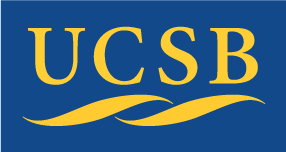|
Geometry, Topology, and Physics Seminar, Fall 2009
Organizers:
Andreas Malmendier
and Dave Morrison.
Meets 4:00 - 5:30 p.m. Fridays in South Hall 6635.
Other Quarters: [
Fall, 2021;
Winter, 2020;
Fall, 2019;
Spring, 2018;
Winter, 2018;
Fall, 2017;
Spring, 2017;
Wnter, 2017;
Fall, 2016;
Spring, 2016;
Winter, 2016;
Fall, 2015;
Spring, 2015;
Winter, 2014;
Fall, 2013;
Fall, 2012;
Fall, 2011;
Winter, 2011;
Spring, 2010;
Winter, 2010;
Fall, 2009;
Spring, 2009;
Winter, 2009;
Fall, 2008;
Spring, 2008;
Winter, 2008;
Fall, 2007;
Spring, 2007;
Winter, 2007;
Fall, 2006
]
| Oct. 2 |
Dave Morrison (UCSB)
Abstract: N=2 supersymmetric field theories in four dimensions have been studied from
many points of view, notably by Seiberg and Witten in the mid-1990's who
introduced an associated Riemann surface and used its properties to derive
remarkable results about the physics, and remarkable consequences for
mathematics. In the past six months, work of Gaiotto and collaborators has
shown that these theories can be studied by means of *another* Riemman
surface, this time used to compactify the six-dimensional N=(2,0) field
theories to obtain a four-dimensional theory. Moreover, the two-dimesional
field theory on this "other" Riemann surface is related in many interesting
ways to the N=2 four-dimensional field theory.
This lecture will give an overview of these developments, which will be
described in more detail in future lectures of this seminar.
Lecture notes.
|
| Oct. 9 |
Andreas Malmendier (UCSB)
Abstract:
Jacobian elliptic surfaces are elliptic surfaces with sections. They play a key role
in gauge theory as well as in string theory. In gauge theory, the Seiberg-Witten curve
of SU(2) gauge theory arises as a pencil generated by two cubics in the plane
forming a rational elliptic surface. In F-theory, K3 surfaces constructed as
elliptic surfaces with sections are also of special importance.
In my talk, I will start with the Weierstrass normal form of the
Seiberg-Witten curve for pure SU(2) gauge theory. By carrying out a base
transformation, one obtains a 3-parameter family of
elliptically fibered K3 surfaces. The gauge theoretic relation between the Seiberg-Witten curves with N_f=2
and N_f=0 hypermultiplets in turn defines a Shioda-Inose structure on each K3 surface in the family with
quotient birational to a Kummer surface of the Jacobian of a genus-two curve.
Audio [ mp3,
wma ];
Lecture notes.
|
| Oct. 16 |
Dave Morrison (UCSB)
Abstract: I will continue to review the recent progress in four-dimensional N=2
supersymmetric field theories. In this lecture, I will concentrate
on the conformal building blocks and associated dualities introduced
by Gaiotto in arXiv:0904.2715. If time permits, I will also discuss
how these constructions are related to the study of wall-crossing
formulas made by Gaiotto, Moore, and Neitzke.
Audio [ mp3,
wma ];
Lecture notes.
|
| Oct. 23 |
Francesco Benini (Princeton)
Abstract: I will fastly review Gaiotto's construction of N=2 SCFTs via
M5-branes wrapped on Riemann surfaces, including an alternative type IIB construction
suitable to study their flavor symmetries. Then I will focus on N=1 constructions, and the
computation of central charges from supergravity. The method also gives some information on the recently
discovered 2d-4d correspondence with Toda theories.
Audio [ mp3,
wma ];
Slides.
|
| Oct. 30 |
No meeting this week
|
| Nov. 6 |
Herman Verlinde (Princeton)
Abstract:
I will give further details about arXiv:0909.0945 and related work.
Audio [ mp3,
wma ];
Lecture notes.
|
| Nov. 13, 20 |
No meeting this week
|
Nov. 27 |
Thanksgiving - No meeting
|
| Dec. 15 |
The High Energy Seminar will
meet in KITP SSR at 12:30 pm.
Paul Aspinwall (Duke)
|
|
|



